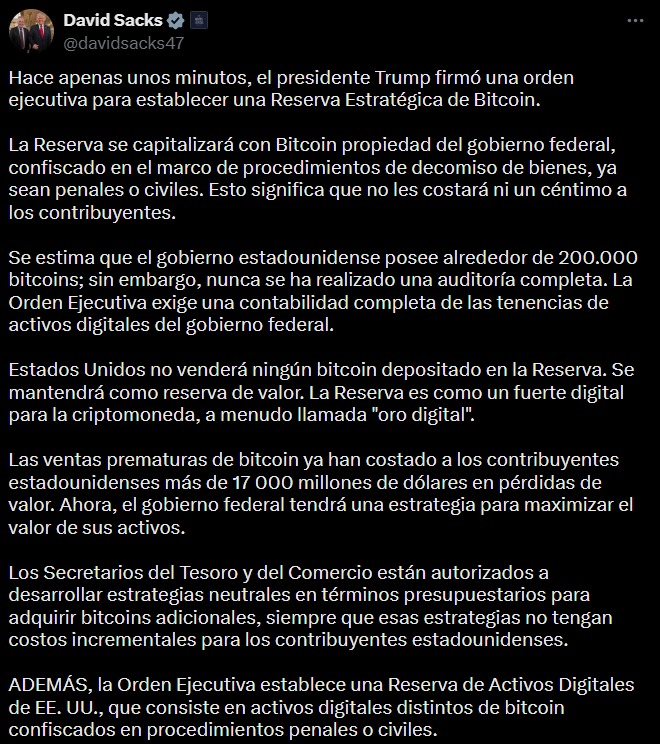Bitcoin is a reserve of liquid value, globally portable and not a speculative investment.
Some governments believe they can compete by launching CBDC, but reality will end up imposing.
Five years ago, in 2020, when Strategy gave the step to invest in Bitcoin (BTC), many interpreted it as a reckless decision. Under the leadership of Michael Saylor, the company became the first large company to adopt this currency as its main reserve of value. Today, with more than 600,000 BTC in its possession, it has established itself as a reference for those firms that seek to protect inflation and diversify its capital.
Following that line, the Japanese Metaplanet company has established the creation of Satoshi Nakamoto as central axis of its strategy against the devaluation of the Yen. The organization has financed its purchases of Bitcoin through bond emissions without interest and the rights to buy market shares and contributions, positioning itself as the largest BTC holder among companies that are quoted in the stock market in Asia.
According to the data from Bitcoin Treasuries, Companies such as Strategy, Mara Holdings, XXI and Metaplanet lead the Global Corporate Holding Ranking of Bitcoin. However, Latin America also takes a position in this field, especially for the monetary devaluation and economic uncertainty facing certain countries.
A prominent example is Bitfarms, a mining company with Argentine roots and headquarters in Canada, which leads the Latin American ranking with more than 1,100 BTC in its possession. It is followed by Mercado Libre, the Argentine Giant of Electronic Commerce, who recently strengthened his treasury by raising his Bitcoin holdings to more than 570 BTC.
These companies understood that Bitcoin is not a speculative investment, but a reserve of value with high global portability and a constant growth liquidity.
Thus, States are witnesses how private entities accumulate bitcoin No need for permits or centralized control.
At a present time marked by geopolitical tensions, such as those currently facing Israel and Iran, weakened coins in countries such as Venezuela and Argentina, and bank restrictions that slow innovation, the idea that a government can use Bitcoin to trade, protect its economy or even strategically compete against the dollar or the euro, it is no longer a fantasy.
El Salvador’s precedent – disruptive and extremely favorable to the sector – also contributed to laying the foundations for a broader state adoption that already begins to take shape. This will not necessarily depend on laws that recognize BTC as legal tender currency, but on discreet purchases for reservations, its inclusion in sovereign funds or its integration into financial diversification strategies by the central banks.
This movement It can be reflected in what is currently happening with the United States government. As Cryptonotics reported, in March 2025, President Donald Trump signed an executive order authorizing the creation of a strategic Bitcoin reserve, using assets seized by the federal government in criminal and civil procedures.


The proposal has generated great interest in stating that the BTC of the Government – stated in more than 200,000 units – are maintained as a value of value, in what many call a kind of “Fort Knox Digital”.
At the time of writing this note, it is still awaited that the US Treasury and Commerce departments define budgetary strategies to acquire more bitcoin, without this implying additional costs for taxpayers – as established by the executive order.
The sustained success of Bitcoin’s listed funds (ETF), added to a remarkable corporate support, reinforce the idea that the rules of the game are changing. As well as the companies that advanced some years ago today see their capital and influence, Governments that remain on the sidelines run the risk of lagging behind in front of a renewed financial system that already appears on the horizon.
The CBDC appears to dirty the picture, but Bitcoin will end up prevailing
However, while some governments explore the incorporation of Bitcoin into their reserves, others bet on digital central banks (CBDC) as a controlled alternative to compete. Projects such as Yuan Digital in China or the electronic version of the euro have been presented as an evolution that seeks to capture the attractiveness of digital payments.
However, CBDCs are nothing more than an extension of the most problematic aspects of the traditional financial system. Far from representing a liberating innovation, they are designed to reinforce state surveillance, which could not gain great adoption.
Unlike Bitcoin, which guarantees autonomy and privacy thanks to its decentralized nature, digital currencies issued by central banks allow governments to monitor each transaction, impose limits and even freeze funds at will. Instead of empowering the citizen, they are emerging as control tools.
In conclusion, The question is not whether more states will adopt BTC, but when and how they will do it. The example of the corporate sector is exerting an increasingly largest pressure on governments to respond to market demands, while Bitcoin continues to consolidate as a solid and strategic alternative.


